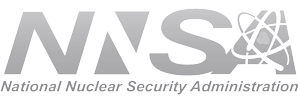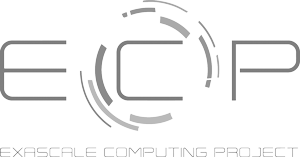Software metrics are a critical tool for building reliable software and assessing measurable software quality, especially in complex domains. Software metrics are important for many reasons, including measuring software performance, planning work items, and evaluating productivity. Within the software development process, software metrics are related to the four functions of management: planning, organization, control, and improvement. The ultimate goal of software metrics is to afford continuous insight into products and processes. A useful metric typically provides a numerical assessment of the effectiveness of the underlying software or process.
The importance of software metrics
The complexity and criticality of research software certainly motivate the need for ensuring quality and reliability. Because a software metric is a key tool for assessing, measuring, and understanding software quality and reliability, Jeffrey Carver of the University of Alabama, George Thiruvathukal of Loyola University Chicago, and I surveyed the research software developers community to understand their knowledge and use of software metrics. The survey provided respondents an opportunity to share feedback on the impact various types of software metrics have had on their respective projects. While the detailed results we obtained from the survey were published as a research paper, I'm going to describe a few key findings in this article.
Survey results
In general, the surveyed research software developers reported low knowledge of metrics. Many of them indicated they found metrics rarely or never useful. However, they were able in free-response questions to name many metrics related to software engineering (SE). While respondents listed items in the free responses that were not necessarily metrics by the traditional definition, they did mention most of the metrics that appear in classic texts.
We conducted a qualitative analysis of the specific metrics that respondents indicated they knew and used in their projects. In total, the respondents listed 89 unique metrics, indicating they were aware of a large number of metrics. We grouped these 89 unique responses into the following six high-level categories:
- Code Metrics – metrics that measure complexity (e.g., McCabe, number of classes, and coupling) and that measure other characteristics of code (e.g., number of clones and defect density)
- Process Metrics – metrics that are collected over longer periods of time and provide insight into the software development process (e.g., productivity, cycle time, or number of commits)
- Testing Metrics – metrics that measure and monitor testing activities by giving insight into test progress, productivity, and quality (e.g., code coverage or number of tests)
- General Quality Metrics – metrics that are related to desirable properties of software that are not easy to measure as part of the development process or through analysis of the source code (e.g., interoperability, portability, or sustainability)
- Performance Metrics – metrics that are commonly of interest for software executing on high-performance computing platforms, addressing execution time, storage (e.g., RAM or disk space), or scalability (e.g., time vs. CPUs/cores)
- Recognition Metrics – metrics that measure how a project or its developers quantify outside interest in their work (e.g., citations or downloads).
In addition to the four categories that are commonly found in the software metrics literature (code, general quality, process, and testing), we identified two categories of metrics (performance and recognition) that are not found in the traditional software metrics literature. These new categories are often of interest to research software developers working in high-performance computing environments. Recognition metrics are particularly timely, as research software developers are increasingly interested in being recognized and receiving proper credit for developing research artifacts such as software, tools, and libraries.
Additional insights
Another interesting result is that research software developers are generally the most knowledgeable in regard to code metrics but rarely seem to use them. The reported use of code metrics was dreadfully low compared with the ratio between metrics known and used for the other five categories. The data in the survey did not provide information necessary to explain why this result may have occurred. Nevertheless, it is both interesting and potentially worrisome. One possible explanation is that while respondents were aware of many different code metrics, they did not believe that these metrics were actually useful in their research software projects. Further research is needed to better understand this discrepancy and identify any necessary solutions that can reduce the gap. Based on the results, we make some additional observations about the rest of the metrics categories:
- Testing Metrics – Respondents used testing metrics second only to performance metrics. This result is encouraging considering their appearance in the SE literature and test-driven development.
- General Quality Metrics – While these metrics do not always correspond directly to methods established in the SE literature, they are interesting because they shed light on how research software developers view quality in general. We were also encouraged to see interest in sustainability, which is an area of growing importance within the research software community.
- Performance Metrics – These metrics are clearly of value for the types of systems typically used by research software developers. When the software is written to run on a high-performance computer, for example, lack of performance is a negative characteristic.
- Process Metrics – Respondents reported high usage of metrics of interest to agile software developers. Given that many of the responses came from small to medium-sized teams, most of these suggest the use of agile processes.
- Recognition Metrics – From a traditional SE perspective, this set of metrics would be somewhat unexpected. Respondents reported many metrics as being significant for addressing recognition. The presence of these metrics reinforces the current notion that developers of research software need more and better ways to formally track and quantify their contributions to research.
While this is a short overview of the common usage of different categories of software metrics in research software development, the paper indicated in the “Further reading” section provides the full results from the survey. This study shows that various software metrics could be of value to research software development teams. While work remains to be done to increase knowledge of metrics within this community, I hope that this work can help research software developers see the potential merits of using metrics in their projects.
Further reading
This article is based on a paper in the proceedings of the 14th IEEE International Conference on e-Science (2018): N.U. Eisty, George K Thiruvathukal, J.C. Carver, "A survey of software metric use in research software development," doi: 10.1109/eScience.2018.00036
Author bio
Nasir Eisty is an assistant professor in the Computer Science and Software Engineering Department of California Polytechnic State University, San Luis Obispo, CA. He received his Ph.D. degree in computer science from the University of Alabama in spring 2020. His research interests lie in the areas of empirical software engineering, software quality, and research software engineering. He received a 2020 Better Scientific Software Fellowship award from the U.S. Department of Energy.


